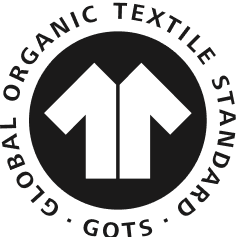- 18 January, 2024
By Santi Mallorquí, CEO of Organic Cotton Colours.
In the previous chapter, I told you how we ended up losing the 2013 crop season. The reason was that the government NGO assisting the farmers stopped receiving funds from the state, communication was cut off, and no one knew how to redirect the situation. There, I learned that we had to act without intermediaries and create our own network of farmers committed to our project.
The next trip to Brazil was in August 2014. We traveled a good part of the northeast, visiting previously selected families; I had the feeling that “the third time was the charm.” Diógenes Fernández was already part of the OCC team and turned out to be the person we needed; he knew the terrain and was well-received among the farmers and Embrapa.
Embrapa is a federal agency that supplies seeds and provides technical assistance to farmers. Without them and without the invaluable almost personal assistance of Fabio Aquino, head of the organic cotton department, our good intentions would have been in vain.
Obtaining the seeds is already a delicate process because they may be contaminated with genetically modified species. This happens because many types of seeds circulate, and not all farmers are aware of the importance of knowing their origin, due to pollination from adjacent fields. It is also common for contamination to occur in the ginning process if it has been carried out in a company that combines conventional and organic cotton.
It was crucial to start on the right foot and ensure good seeds. Normally, they are marketed lint-free, meaning without fuzz, considered cleaner and with less risk of transporting insects. However, aggressive chemical agents are used to remove the fuzz around the seed. So, obtaining enough lint-free seeds in our 3 colors was quite a challenge.
Technical assistance posed another significant challenge, given the enormous distances that had to be traveled on dirt roads to meet a group of families at their residence. In the best cases, 6 to 10 families are grouped into “settlements,” which are like small groups of houses surrounded by crops. Each settlement is part of a regional cooperative. They receive training and follow-up for the plantations at home, so to speak. Among families, they help each other in preparing the fields and in the manual harvesting, which can take a month, as only the plumage in optimal ripening conditions is collected.
On that trip, we visited cooperatives in 4 states: Piauí, Rio Grande do Norte, Paraíba, and Pernambuco. We felt the danger of traveling the interstate roads in the northeast. The pavements are in very poor condition, dotted with giant potholes, animals roam freely into the street, and small mopeds zipp through heavy vehicle traffic. To give you an idea, on this trip, we covered more than 2500 km in 10 days.
Going to personally meet all the families in their homes was the most beautiful experience I had throughout this whole project. Unlike usual negotiation, there was no stale conduct or meeting tables. We simply looked each other in the eyes and listened. I understood how important biodynamic crops are for the food sustenance of the entire family and the animals they raise. These are areas where it rains very little, and they have tanks to store every drop of rainwater from the sky for their vital consumption. They are good, humble people; they always say goodbye with a “vai com Deus,” (Go with God) and if you tell them that only rain is missing for everything to work, they say “Se Deus quiser” (If God wills it). They live with very few resources but with a lot of faith and hope.
Undoubtedly, on this trip, we laid the foundations for how the OCCGuarantee project would work in Brazil, we established the contracts to sign, some visits in the cooperative offices and some in the fields. It was important to clearly explain our intention, “we want to count on you every year, we will take all the cotton you can produce.” We already had prices and conditions agreed upon from the early 2014 meeting with most cooperatives, so everyone was informed of the agreement and very happy to be chosen in the “parceria” (partnership) of Organic Cotton Colours.
It was going to be a good starting year; the forecast met our initial needs to be able to spin in Barcelona. We had little green color, but this time we cultivated with “Topazio” and “Rubí” seeds, which are two shades of brown, to test which one we would keep.
The next trip was already planned for January 2015; it was our big moment to export from the port of Recife, in the state of Pernambuco.
The truth is that specifying the processing and preparation of the fiber, its transport, bureaucratic procedures, and export were great challenges that I will tell you about in detail in chapter six.










